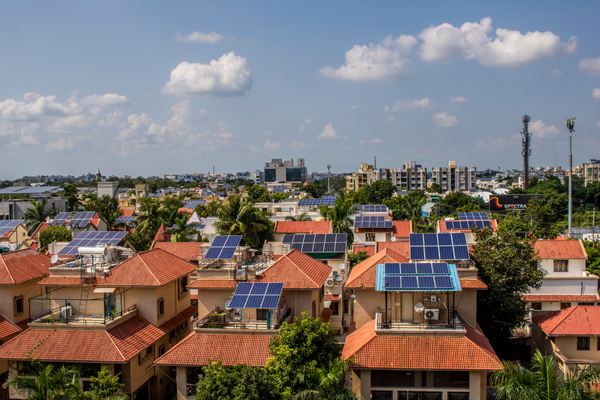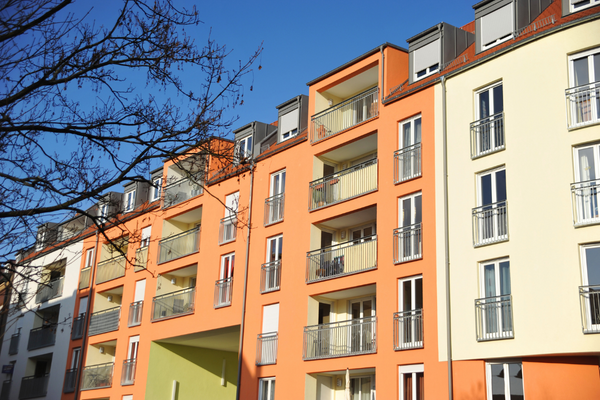Home > Solar Inverters





A solar inverter converts solar panel energy into electricity for your home or business. It changes DC power to AC power, so you can use it for lights, appliances, and more. Sun-AP Ecopower provides trusted inverters for every need.
Solar Grid Tied / On-grid STRING Inverter: These are first-generation solar inverters and are rugged in design. These inverters receive input DC power from many / multiples solar panels, connected in series / parallel config to provide required rated DC input voltage and current of the inverter and convert to AC power in 3 phase or 415 Volts.
Solar Grid-tied / On-grid CENTRAL Inverter: These inverters can be called larger string inverters above 500 kVA capacity. Generally, these inverters are of minimum 1 MVA single inverter or multiples of sizes higher than 1 MVA and are used generally in large ground-based power plants
Solar Grid Tied / On-Grid String Inverter with Power Optimizer: These are the next 2nd generation solar inverters. These are a combo of regular string inverters with additional DC optimizers or MPPT units fitted behind each solar panel. This helps in 2 ways of conditioning and streaming DC input optimally to the string inverter as well as enabling monitoring at each panel. These do not convert DC to AC at the panel level. That is done by the regular string inverter.
Solar Grid Tied / On-Grid Micro-Inverters: These are next-generation or 3rd generation Latest Generation solar inverters. In Solar Microinverters, each panel is fitted with a solar inverter with built-in MPPT which importantly converts the DC of each panel to the AC output of each panel and then aggregates it. This has advantage of no high-voltage DC in system giving high level of safety for residential and commercial, industrial installations, essentially where installed over rooftop of buildings or homes.
Solar Hybrid Inverters: These inverters are a combination of Grid Tied / On-Grid string inverters and ADDITIONAL battery-operated online or offline inverters like UPS (un-interrupted power supply). So essentially client gets all benefits of a grid-tied inverter under net metering as above for grid-tied / on-grid inverter. However, apart from exporting the power to the government/utility, it helps the user have the choice to store such extra solar power in batteries of either lead acid or lithium battery type.
Solar Off-Grid Inverters: These inverters are essentially online or offline solar UPS (uninterrupted power supply) types. These inverters use solar panel energy to charge batteries with programming to prioritise over grid power. The loads are directly powered through solar energy converted to AC during daytime in case batteries are fully charged or the solar panel first charges the battery and the load is powered through the same batteries till the battery is fully charged by solar. they convert DC into AC from the battery and also convert AC into DC for charging the battery bank from the solar panel system.
UPS Inverters: These inverters do not have solar charging or solar option. These are regular UPS (uninterrupted power supply) types. These charge batteries by grid or utility power and load are supported online or offline UPS mode as the case may be.
Sun-AP prides itself on presenting to its Indian clients the best in class and latest technological innovations from Global Leaders and brands. Fimer-ABB, Deye, and Sakthi have been in collaboration with Sun-AP EcoPower for creating milestones in Solar Industry. Being the leading distributor of solar inverters, Sun-AP EcoPower aids its clients in the process of buying to maintaining their inverters.
| Type | Power Range | Efficiency | Best For | Warranty |
|---|---|---|---|---|
| Grid-Tied | 1-100 kW | Up to 98% | Homes, Offices | 5-10 yrs |
| Microinverters | 250-400 W | Up to 97% | Rooftop Systems | 10 yrs |
| Hybrid | 3-10 kW | Up to 96% | Homes, Small Shops | 5-8 yrs |
| Off-Grid | 1-50 kW | Up to 95% | Remote Areas | 5 yrs |
Ready to save money and go green? Choose Sun-AP Ecopower for the best solar inverters in India. Contact us for a free quote or expert advice.
Microinverters are another version of inverters that function with a parallel architecture panel compared to serially arranged inverters. Thus, they require lesser space than regular string inverters. They are also efficient in producing higher output even in shaded areas which are not possible otherwise where shade affects productivity.
String Inverters, on the other hand, all the energy from your solar panels travels to a single source, where it gets converted into AC. These large inverters get installed next to the utility meter. It is approximately the size of a wall-mounted water heater.
String inverters convert the total energy based on the lowest-performing panel. So, all panels must generate at similar levels for the most energy to be gained from the system. If one panel is 30% shaded, you will only receive 70% of your total system’s possible production.
Net metering is a system that uses a credit solar energy system to be fed to the Grid where the system is linked to. With net metering, you only pay for the electricity that you use beyond what energy your panels generate.